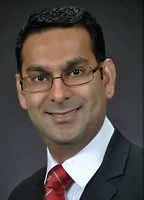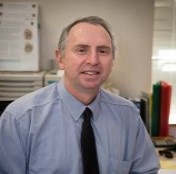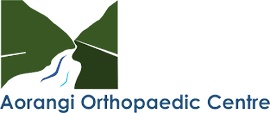MidCentral > Private Hospitals & Specialists >
Aorangi Orthopaedic Centre
Private Service, Orthopaedics
Today
Description
Welcome to the Aorangi Orthopaedic Centre. We are a professional group of fully qualified, experienced and vocationally registered Orthopaedic Surgeons providing Orthopaedic Surgical care for Palmerston North and the wider Manawatu District in New Zealand.
Services offered include:
- Joint Replacement of the Knee, Hip, Shoulder and Elbow
- Spinal Surgery
- Sports Surgery
- Paediatric Orthopaedics
- Arthroscopy of the Shoulder, Wrist, Knee and Ankle
- Shoulder Surgery
- Foot and Ankle Surgery
- Trauma Orthopaedic Surgery
What is Orthopaedic Surgery?
This is an area that deals with conditions of the musculoskeletal system (bones and joints of the limbs and spine). The specialty covers a range of different types of conditions starting with congenital (conditions which children are born with) through to degenerative (conditions relating to the wearing out of joints). The field of orthopaedics includes trauma, where bones are broken or injuries are sustained to limbs.
Other conditions that are covered by orthopaedics are metabolic conditions, neurological and inflammatory conditions.
Consultants
-

Mr Geoff Anderson
Orthopaedic Surgeon
-

Mr David Brougham
Orthopaedic Surgeon
-

Dr Ali Khademi
Orthopaedic Surgeon
-

Mr Tim Love
Orthopaedic & Spinal Surgeon
-

Mr Murali Reddy
Orthopaedic Surgeon
-

Mr Gert Starker
Orthopaedic Surgeon
-

Mr Chris Williams
Orthopaedic Surgeon
Ages
Child / Tamariki, Youth / Rangatahi, Adult / Pakeke, Older adult / Kaumātua
How do I access this service?
Referral
A referral from your GP or other health provider is preferred.
Referral Expectations
Fees and Charges Categorisation
Fees apply
Fees and Charges Description
- We are Southern Cross Affiliated Providers.
- No surcharge for ACC consults
Hours
| Mon – Fri | 9:00 AM – 5:00 PM |
|---|
Public Holidays: Closed Wellington Anniversary (20 Jan), Waitangi Day (6 Feb), Good Friday (18 Apr), Easter Sunday (20 Apr), Easter Monday (21 Apr), ANZAC Day (25 Apr), King's Birthday (2 Jun), Matariki (20 Jun), Labour Day (27 Oct).
Christmas: Open 23 Dec — 24 Dec. Closed 25 Dec — 29 Dec. Open 30 Dec — 31 Dec. Closed 1 Jan — 5 Jan. Open 6 Jan — 10 Jan.
Languages Spoken
English
Procedures / Treatments
Many orthopaedic examinations and treatments of joints are performed using an arthroscope, a narrow tube containing a fibre optic telescope that is inserted into the joint through a small incision. The arthroscope is connected to a video camera and images of the interior of the joint can be seen on a TV monitor. Fine instruments can be introduced through small incisions (portals) to allow surgery to be performed without the need for large cuts. This allows many procedures to be performed as a day stay and allows quicker return to normal function of the joint. Arthroscopic surgery (sometimes known as "keyhole" surgery) is less painful than open surgery and decreases the risk of healing problems. Arthroscopy allows access to parts of the joints which cannot be accessed by other types of surgery. For more information about arthroscopy please click here.
Many orthopaedic examinations and treatments of joints are performed using an arthroscope, a narrow tube containing a fibre optic telescope that is inserted into the joint through a small incision. The arthroscope is connected to a video camera and images of the interior of the joint can be seen on a TV monitor. Fine instruments can be introduced through small incisions (portals) to allow surgery to be performed without the need for large cuts. This allows many procedures to be performed as a day stay and allows quicker return to normal function of the joint. Arthroscopic surgery (sometimes known as "keyhole" surgery) is less painful than open surgery and decreases the risk of healing problems. Arthroscopy allows access to parts of the joints which cannot be accessed by other types of surgery. For more information about arthroscopy please click here.
Many orthopaedic examinations and treatments of joints are performed using an arthroscope, a narrow tube containing a fibre optic telescope that is inserted into the joint through a small incision. The arthroscope is connected to a video camera and images of the interior of the joint can be seen on a TV monitor.
Fine instruments can be introduced through small incisions (portals) to allow surgery to be performed without the need for large cuts. This allows many procedures to be performed as a day stay and allows quicker return to normal function of the joint.
Arthroscopic surgery (sometimes known as "keyhole" surgery) is less painful than open surgery and decreases the risk of healing problems. Arthroscopy allows access to parts of the joints which cannot be accessed by other types of surgery.
For more information about arthroscopy please click here.
This is a surgical procedure performed on a knee joint that has become painful and/or impaired because of disease, injury or wear and tear. In total knee replacement, artificial materials (metal and plastic) are used to replace the following damaged surfaces within the knee joint: the end of the thigh bone (femur) the end of the shin bone (tibia) the back of the kneecap (patella) This operation is a major procedure which requires you to be in hospital for several days and will be followed by a significant period of rehabilitation. Occasionally blood transfusions are required; if you have some concerns raise this with your surgeon during consultation. For more information about total knee replacement please click here.
This is a surgical procedure performed on a knee joint that has become painful and/or impaired because of disease, injury or wear and tear. In total knee replacement, artificial materials (metal and plastic) are used to replace the following damaged surfaces within the knee joint: the end of the thigh bone (femur) the end of the shin bone (tibia) the back of the kneecap (patella) This operation is a major procedure which requires you to be in hospital for several days and will be followed by a significant period of rehabilitation. Occasionally blood transfusions are required; if you have some concerns raise this with your surgeon during consultation. For more information about total knee replacement please click here.
This is a surgical procedure performed on a knee joint that has become painful and/or impaired because of disease, injury or wear and tear.
In total knee replacement, artificial materials (metal and plastic) are used to replace the following damaged surfaces within the knee joint:
- the end of the thigh bone (femur)
- the end of the shin bone (tibia)
- the back of the kneecap (patella)
This operation is a major procedure which requires you to be in hospital for several days and will be followed by a significant period of rehabilitation.
Occasionally blood transfusions are required; if you have some concerns raise this with your surgeon during consultation.
For more information about total knee replacement please click here.
The anterior cruciate ligament (ACL) is a strong, stabilising ligament running through the centre of the knee between the femur (thigh bone) and tibia (shin bone). When the ACL is torn, frequently as the result of a sporting injury, arthroscopic surgery known as ACL Reconstruction is performed. The procedure involves replacement of the damaged ligament with tissue grafted from elsewhere, usually the patellar or hamstring tendon. The ends of the grafted tendon are attached to the femur at one end and the tibia at the other using screws or staples. For more information about ACL Reconstruction please click here.
The anterior cruciate ligament (ACL) is a strong, stabilising ligament running through the centre of the knee between the femur (thigh bone) and tibia (shin bone). When the ACL is torn, frequently as the result of a sporting injury, arthroscopic surgery known as ACL Reconstruction is performed. The procedure involves replacement of the damaged ligament with tissue grafted from elsewhere, usually the patellar or hamstring tendon. The ends of the grafted tendon are attached to the femur at one end and the tibia at the other using screws or staples. For more information about ACL Reconstruction please click here.
The anterior cruciate ligament (ACL) is a strong, stabilising ligament running through the centre of the knee between the femur (thigh bone) and tibia (shin bone).
When the ACL is torn, frequently as the result of a sporting injury, arthroscopic surgery known as ACL Reconstruction is performed. The procedure involves replacement of the damaged ligament with tissue grafted from elsewhere, usually the patellar or hamstring tendon. The ends of the grafted tendon are attached to the femur at one end and the tibia at the other using screws or staples.
For more information about ACL Reconstruction please click here.
This procedure is used when osteoarthritic damage to the cartilage on one side of the knee has caused the angle of the knee joint to change so that most of the body's weight is borne by the affected side, adding to the wear on that side. High Tibial Osteotomy involves reshaping and realignment of the bone so that weight becomes more evenly distributed between the inside and outside of the knee, thereby reducing the workload on the damaged side. You will probably have to stay in hospital for several days after surgery followed by up to 6 months rehabilitation. For more information about osteotomy please click here.
This procedure is used when osteoarthritic damage to the cartilage on one side of the knee has caused the angle of the knee joint to change so that most of the body's weight is borne by the affected side, adding to the wear on that side. High Tibial Osteotomy involves reshaping and realignment of the bone so that weight becomes more evenly distributed between the inside and outside of the knee, thereby reducing the workload on the damaged side. You will probably have to stay in hospital for several days after surgery followed by up to 6 months rehabilitation. For more information about osteotomy please click here.
This procedure is used when osteoarthritic damage to the cartilage on one side of the knee has caused the angle of the knee joint to change so that most of the body's weight is borne by the affected side, adding to the wear on that side.
High Tibial Osteotomy involves reshaping and realignment of the bone so that weight becomes more evenly distributed between the inside and outside of the knee, thereby reducing the workload on the damaged side.
You will probably have to stay in hospital for several days after surgery followed by up to 6 months rehabilitation.
For more information about osteotomy please click here.
An incision (cut) is made on the side of the thigh to allow the surgeon access to the hip joint. The diseased and damaged parts of the hip joint are removed and replaced with smooth, artificial metal ‘ball’ and plastic ‘socket’ parts.
An incision (cut) is made on the side of the thigh to allow the surgeon access to the hip joint. The diseased and damaged parts of the hip joint are removed and replaced with smooth, artificial metal ‘ball’ and plastic ‘socket’ parts.
An incision (cut) is made on the side of the thigh to allow the surgeon access to the hip joint. The diseased and damaged parts of the hip joint are removed and replaced with smooth, artificial metal ‘ball’ and plastic ‘socket’ parts.
Several small incisions (cuts) are made in the shoulder through which is inserted a small telescopic instrument with a tiny camera attached (arthroscope). The surgeon is then able to remove any bony spurs or inflamed tissue and mend torn tendons of the rotator cuff group.
Several small incisions (cuts) are made in the shoulder through which is inserted a small telescopic instrument with a tiny camera attached (arthroscope). The surgeon is then able to remove any bony spurs or inflamed tissue and mend torn tendons of the rotator cuff group.
Several small incisions (cuts) are made in the shoulder through which is inserted a small telescopic instrument with a tiny camera attached (arthroscope). The surgeon is then able to remove any bony spurs or inflamed tissue and mend torn tendons of the rotator cuff group.
Between the vertebrae in your spine are flat, round discs that act as shock absorbers for the spinal bones. Sometimes some of the gel-like substance in the center of the disc (nucleus) bulges out through the tough outer ring (annulus) and into the spinal canal. This is known as a herniated or ruptured disc and the pressure it puts on the spinal nerves often causes symptoms such as pain, numbness and tingling. Initial treatment for a herniated disc may involve low level activity, nonsteroidal anti-inflammatory medication and physiotherapy. If these approaches fail to reduce or remove the pain, surgical treatment may be considered. Discectomy This surgery is performed to remove part or all of a herniated intervertebral disc. Open discectomy – involves making an incision (cut) over the vertebra and stripping back the muscles to expose the herniated disc. The entire disc, or parts of it are removed, thus relieving pressure on the spinal nerves. Microdiscectomy – this is a ‘minimally invasive’ surgical technique, meaning it requires smaller incisions and no muscle stripping is required. Tiny, specialised instruments are used to remove the disc or disc fragments. Laminectomy or Laminotomy These procedures involve making an incision down the centre of the back and removing some or all of the bony arch (lamina) of a vertebra. In a laminectomy, all or most of the lamina is surgically removed while a laminotomy involves partial removal of the lamina. By making more room in the spinal canal, these procedures reduce pressure on the spinal nerves. They also give the surgeon better access to the disc and other parts of the spine if further procedures e.g. discectomy, spinal fusion, are required. Spinal Fusion In this procedure, individual vertebrae are fused together so that no movement can occur between the vertebrae and hence pain is reduced. Spinal fusion may be required for disc herniation in the cervical region of the spine as well as for some cases of vertebral fracture and to prevent pain-inducing movements.
Between the vertebrae in your spine are flat, round discs that act as shock absorbers for the spinal bones. Sometimes some of the gel-like substance in the center of the disc (nucleus) bulges out through the tough outer ring (annulus) and into the spinal canal. This is known as a herniated or ruptured disc and the pressure it puts on the spinal nerves often causes symptoms such as pain, numbness and tingling. Initial treatment for a herniated disc may involve low level activity, nonsteroidal anti-inflammatory medication and physiotherapy. If these approaches fail to reduce or remove the pain, surgical treatment may be considered. Discectomy This surgery is performed to remove part or all of a herniated intervertebral disc. Open discectomy – involves making an incision (cut) over the vertebra and stripping back the muscles to expose the herniated disc. The entire disc, or parts of it are removed, thus relieving pressure on the spinal nerves. Microdiscectomy – this is a ‘minimally invasive’ surgical technique, meaning it requires smaller incisions and no muscle stripping is required. Tiny, specialised instruments are used to remove the disc or disc fragments. Laminectomy or Laminotomy These procedures involve making an incision down the centre of the back and removing some or all of the bony arch (lamina) of a vertebra. In a laminectomy, all or most of the lamina is surgically removed while a laminotomy involves partial removal of the lamina. By making more room in the spinal canal, these procedures reduce pressure on the spinal nerves. They also give the surgeon better access to the disc and other parts of the spine if further procedures e.g. discectomy, spinal fusion, are required. Spinal Fusion In this procedure, individual vertebrae are fused together so that no movement can occur between the vertebrae and hence pain is reduced. Spinal fusion may be required for disc herniation in the cervical region of the spine as well as for some cases of vertebral fracture and to prevent pain-inducing movements.
Between the vertebrae in your spine are flat, round discs that act as shock absorbers for the spinal bones. Sometimes some of the gel-like substance in the center of the disc (nucleus) bulges out through the tough outer ring (annulus) and into the spinal canal. This is known as a herniated or ruptured disc and the pressure it puts on the spinal nerves often causes symptoms such as pain, numbness and tingling.
Initial treatment for a herniated disc may involve low level activity, nonsteroidal anti-inflammatory medication and physiotherapy. If these approaches fail to reduce or remove the pain, surgical treatment may be considered.
Discectomy
This surgery is performed to remove part or all of a herniated intervertebral disc.
Open discectomy – involves making an incision (cut) over the vertebra and stripping back the muscles to expose the herniated disc. The entire disc, or parts of it are removed, thus relieving pressure on the spinal nerves.
Microdiscectomy – this is a ‘minimally invasive’ surgical technique, meaning it requires smaller incisions and no muscle stripping is required. Tiny, specialised instruments are used to remove the disc or disc fragments.
Laminectomy or Laminotomy
These procedures involve making an incision down the centre of the back and removing some or all of the bony arch (lamina) of a vertebra.
In a laminectomy, all or most of the lamina is surgically removed while a laminotomy involves partial removal of the lamina.
By making more room in the spinal canal, these procedures reduce pressure on the spinal nerves. They also give the surgeon better access to the disc and other parts of the spine if further procedures e.g. discectomy, spinal fusion, are required.
Spinal Fusion
In this procedure, individual vertebrae are fused together so that no movement can occur between the vertebrae and hence pain is reduced. Spinal fusion may be required for disc herniation in the cervical region of the spine as well as for some cases of vertebral fracture and to prevent pain-inducing movements.
Disability Assistance
Wheelchair access, Wheelchair accessible toilet, Mobility parking space
Additional Details
Face to face / Kanohi ki te Kanohi, Phone
Parking
Free patient parking is available at the front of the practice.
Pharmacy
Find your nearest pharmacy here
Website
Contact Details
175 Grey Street, Palmerston North
MidCentral
-
Phone
(06) 357 6024
Healthlink EDI
amesbury
Email
Website
175 Grey Street
Roslyn
Palmerston North City
Manawatū-Whanganui 4414
Street Address
175 Grey Street
Roslyn
Palmerston North City
Manawatū-Whanganui 4414
Was this page helpful?
This page was last updated at 9:44AM on September 10, 2024. This information is reviewed and edited by Aorangi Orthopaedic Centre.

